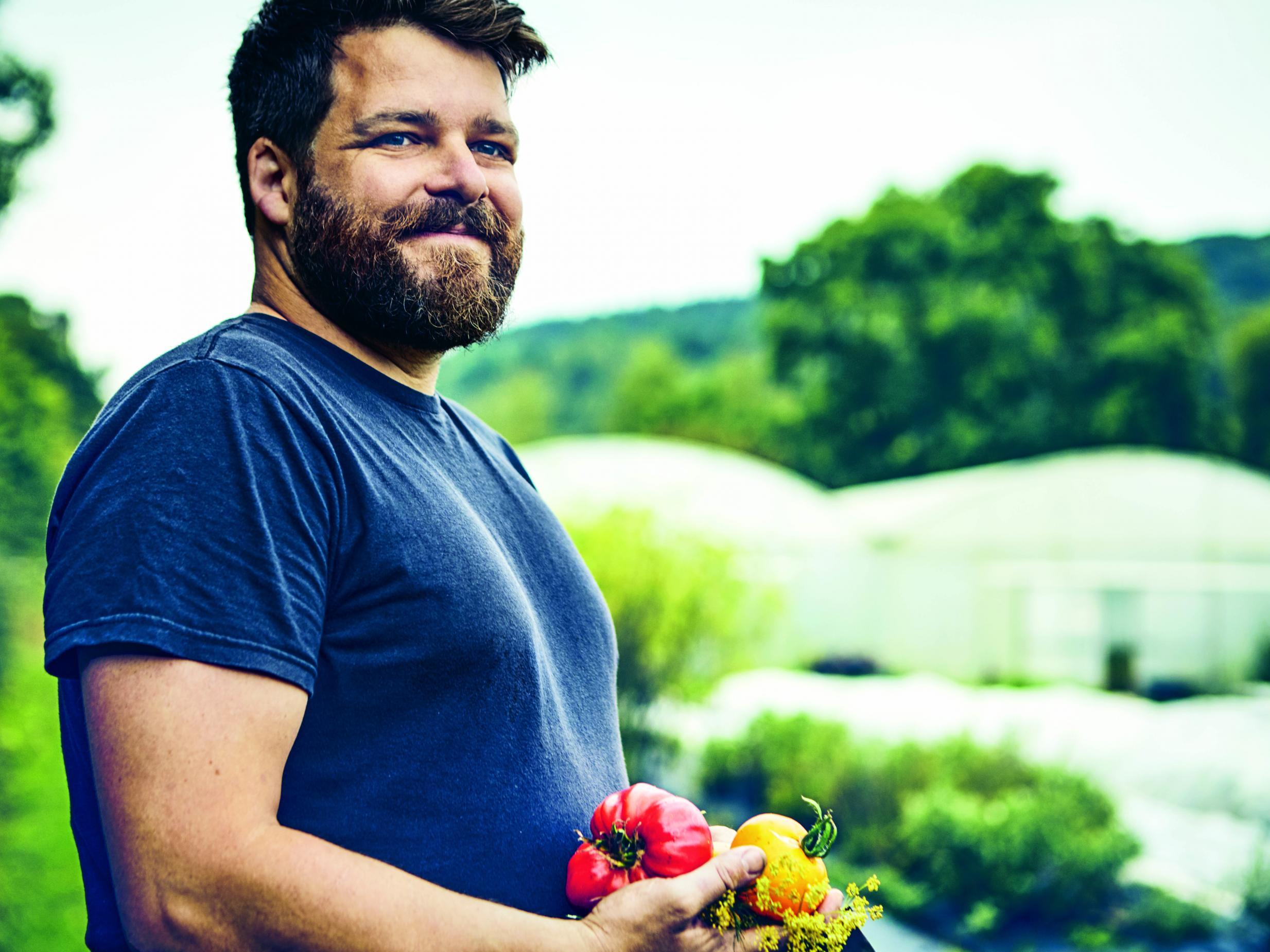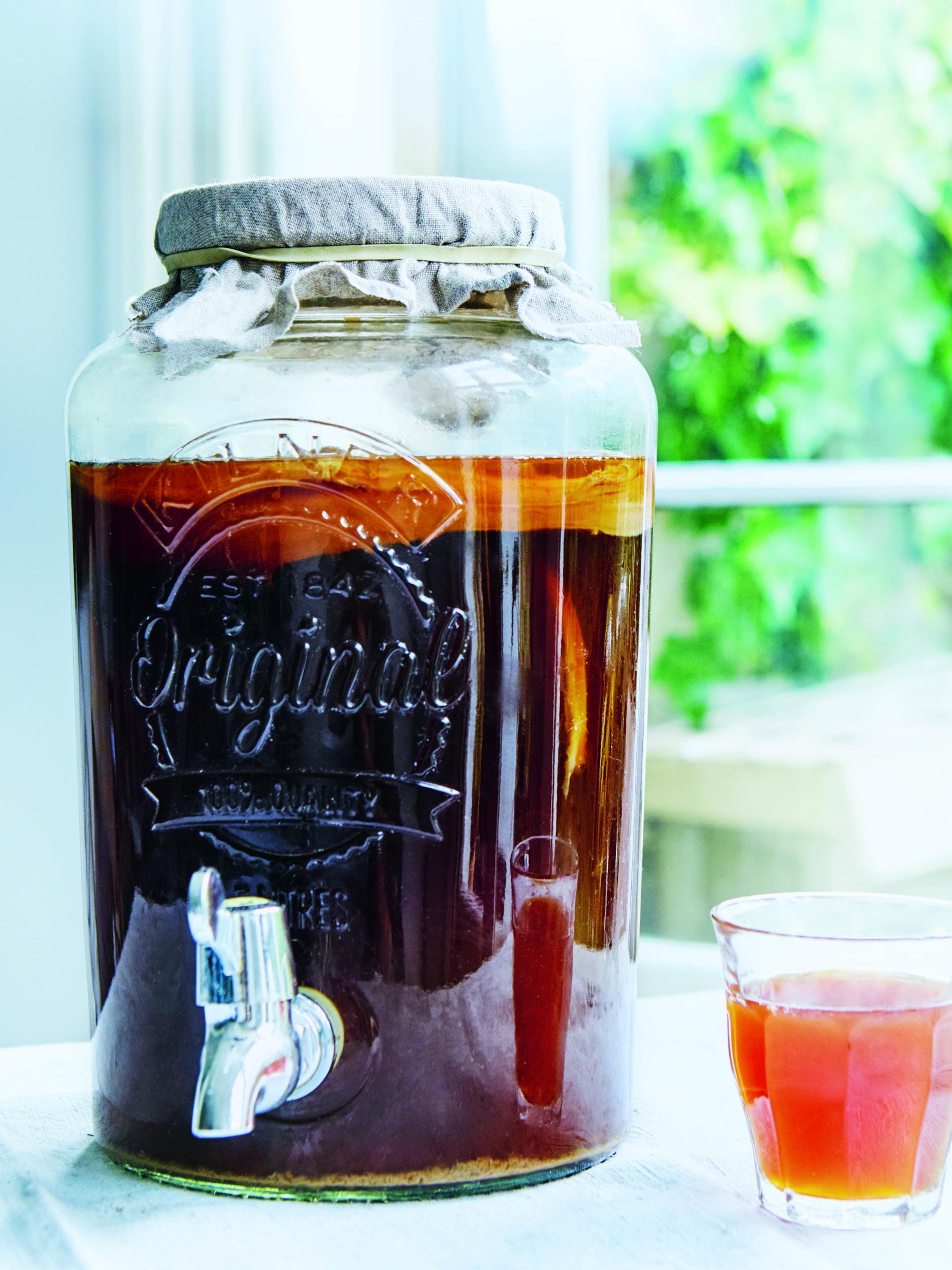How to make Tom Hunt’s gut-friendly Kombucha to stay healthy
The probiotic drink can easily be made at home and is great for building your immune system. Tom Hunt, the self-proclaimed “eco-chef”, shares his tips

Kombucha is a fermented iced tea that’s simple to make and can be flavoured with just about anything, making it not only a great replacement for store-bought fizzy drinks but a great way to use up fruit and vegetable scraps that would otherwise go to waste.
Similar to vinegar, it’s made with a “mother” called a Scoby (a symbiotic colony of bacteria and yeast), which looks like a blobby creature from the deep.
The Scoby grows prolifically, creating a new layer each time a batch is brewed. This means it can easily be shared between friends.
To start, you will need a Scoby. To find one, ask amongst friends and enthusiasts in your local community or order online.
Primary fermentation
Makes 5 litres
This is the first essential stage of making kombucha: turning sweet tea into an effervescent probiotic drink.
5-litre clean fermentation jar, a piece of muslin or a clean tea towel, and a rubber band or piece of string
260g unrefined sugar
4 tbsp black, green or white tea leaves
500ml mature kombucha (if you don’t have 500ml of mature kombucha to start your batch, use 120ml raw apple cider vinegar instead)
1 kombucha Scoby
Measure 1 litre boiling water into a heatproof glass or ceramic jar. Stir in the sugar and tea and set aside to brew for 20 minutes.
Measure 3 litres cold water into your fermentation jar. Using a non-metal sieve, strain the brewed tea into the jar, compost the leaves. Stir in the mature kombucha (or vinegar).
Gently place the kombucha Scoby in the jar, allowing it to float on the top. If it sinks a little, don’t worry, a new layer will form on the top and the mother will rise as it ferments.
Cover the jar with muslin or a clean tea towel and secure with a rubber band or piece of string.
Place the jar in a warm part of your kitchen, away from direct sunlight for 6-18 days. The fermentation time will depend on many factors, including the temperature of your kitchen, the season and your personal taste. After 6 days, pour out a little of the kombucha into a glass and taste it.

When it is ready, it should taste lively and effervescent, with a gentle, balanced sweet and sourness. If it’s not quite ready, cover the jar with a lid and set aside for a further few days before tasting again.
When the kombucha is “to your taste”, strain it into sterilised bottles or jars and store in the fridge. Chilled, it should keep indefinitely, but it will become more vinegary with time. Remember to keep back the Scoby and 500ml of the backslop (mature kombucha from the previous batch) to start off your next batch.
Secondary fermentation
If you want to introduce flavour or extra fizz to your kombucha, add a little sugar to kick off a secondary fermentation and infuse with aromatic fruit and vegetable scraps, herbs and spices.
Once your kombucha is bottled, stir in about 1 tbsp unrefined sugar per litre. If you want to flavour the kombucha, also include 50g fruit or vegetable scraps, a sprig of herbs or pinch of spices per litre.
Tighten the lids and set aside at room temperature for 2-6 days, tasting every day and “burping” the bottles (by opening the lids) to prevent them from exploding.
Once you are happy with the carbonation and the taste, transfer the bottles to the fridge where the flavoured kombucha will keep for at least a month.
Fruit and vegetable trimmings and herbs and spice combinations to try:
Spent citrus rind and fresh root ginger trimmings
Apple scraps with cinnamon bark
Orange peel and dandelion flowers
Sumac and rose petals
Fennel tops with mint stalks
What to do if your kombucha is slow to ferment

If your kombucha is sluggish to ferment, it might be because the temperature is too cold or your water is too heavily chlorinated. First try moving your kombucha to a warmer spot, above 24C. If your kombucha Scoby still doesn’t float after another week, it fails to create a new film or it becomes mouldy, you will need to replace it and start again.
Taking a break
If you have enough kombucha and want to take a break from making it, simply leave the Scoby in the kombucha liquid and store in the fridge until you want to start the fermentation process again. Chilled, it should keep for several months.
‘Eating for Pleasure, People & Planet’ by Tom Hunt published by Kyle Books on 19 March 2020, £26 hardback (octopusbooks.co.uk). Photography credit: Jenny Zarins
Join our commenting forum
Join thought-provoking conversations, follow other Independent readers and see their replies
Comments